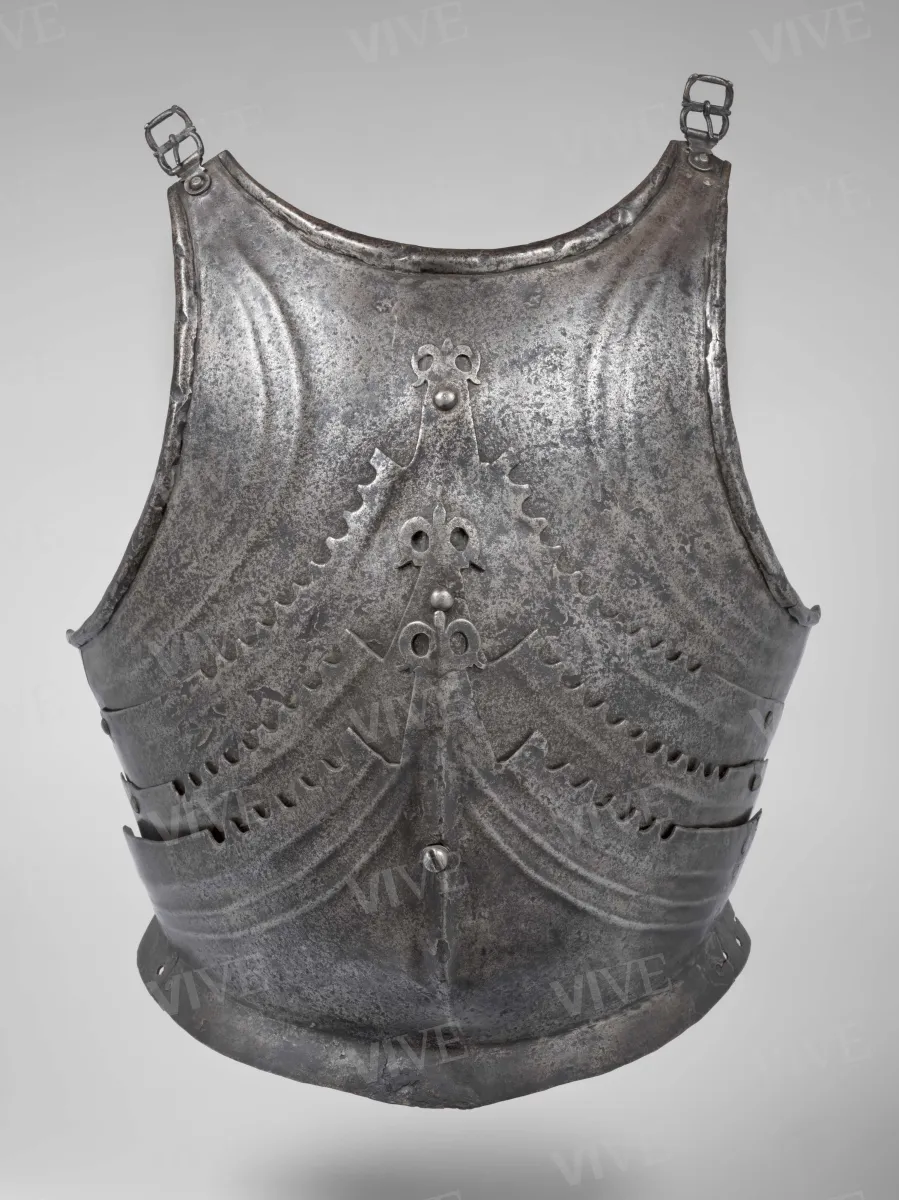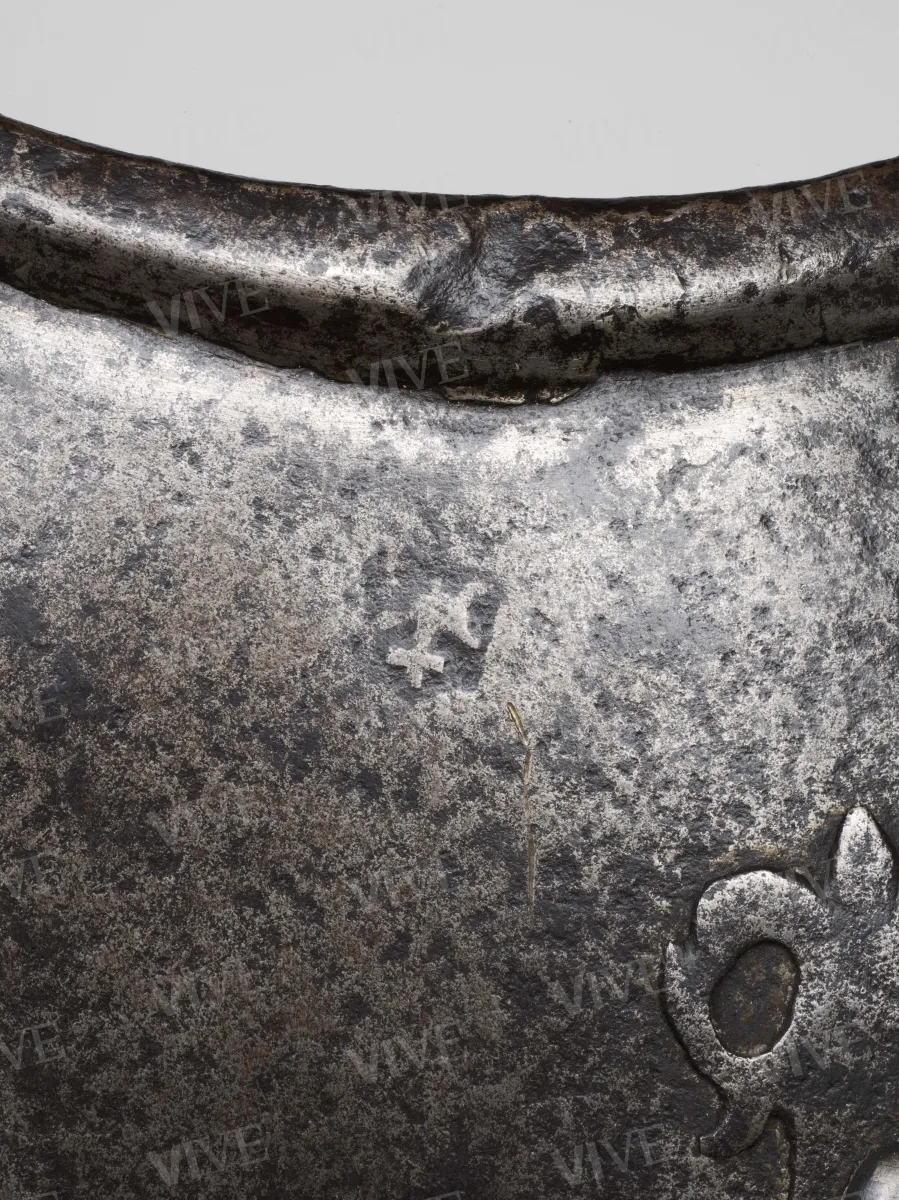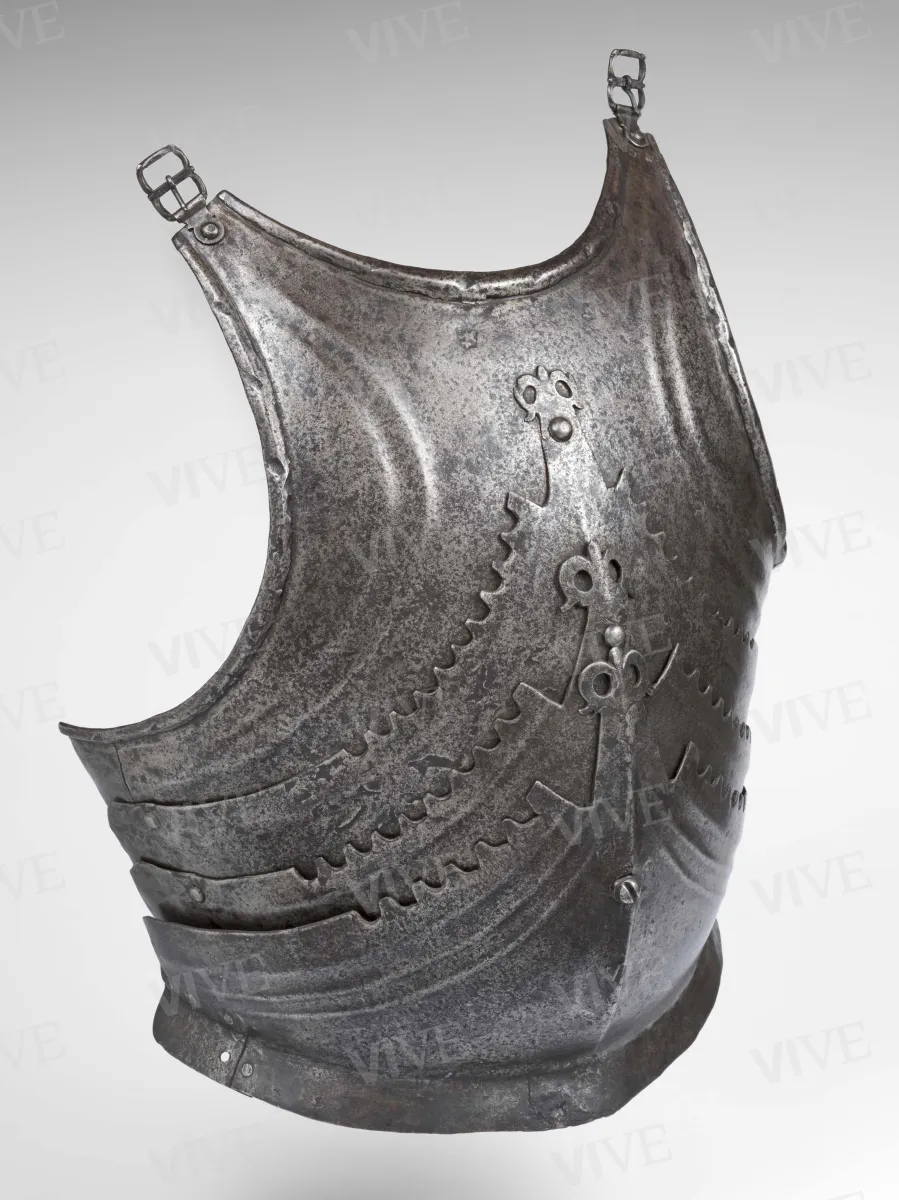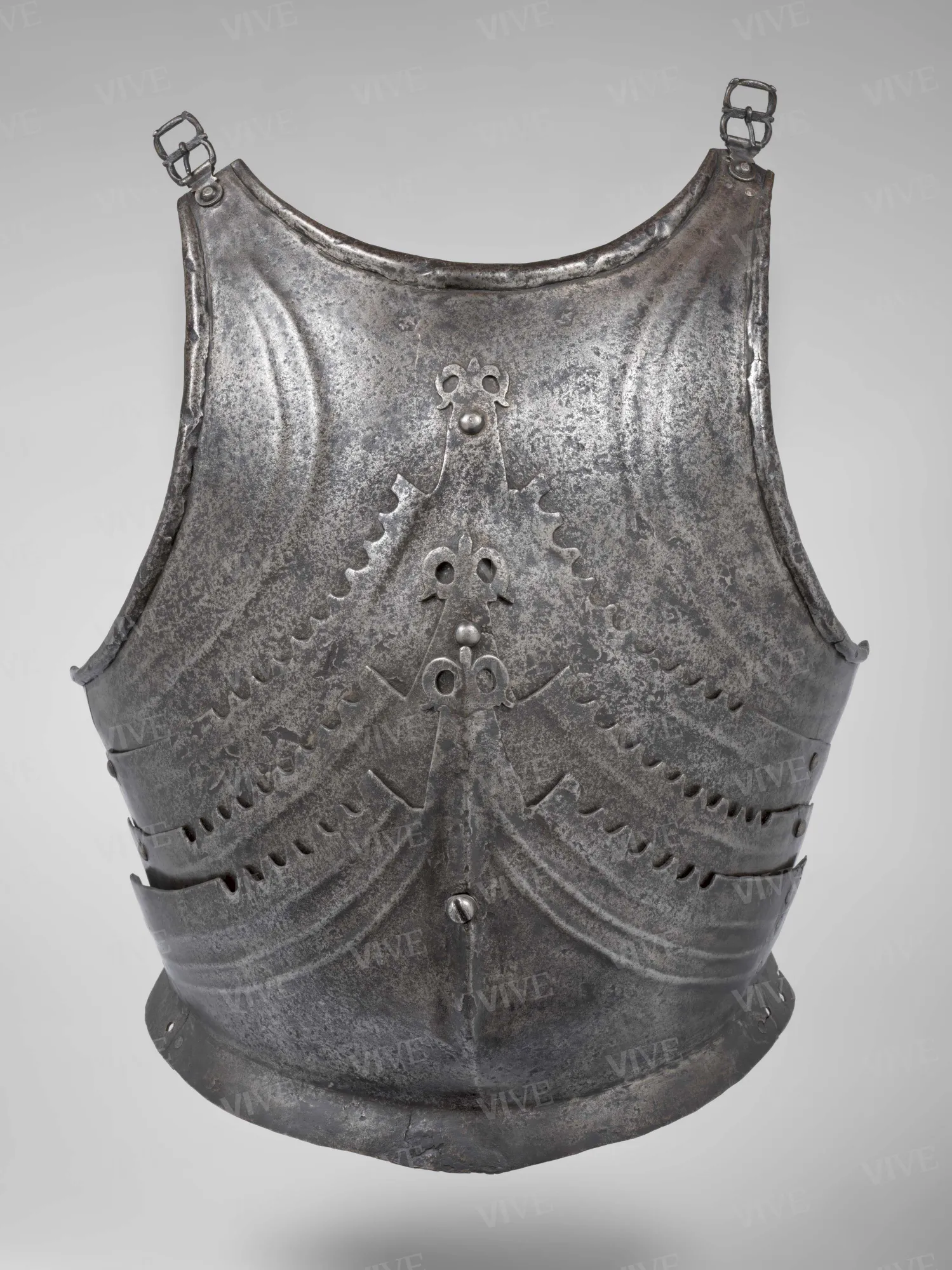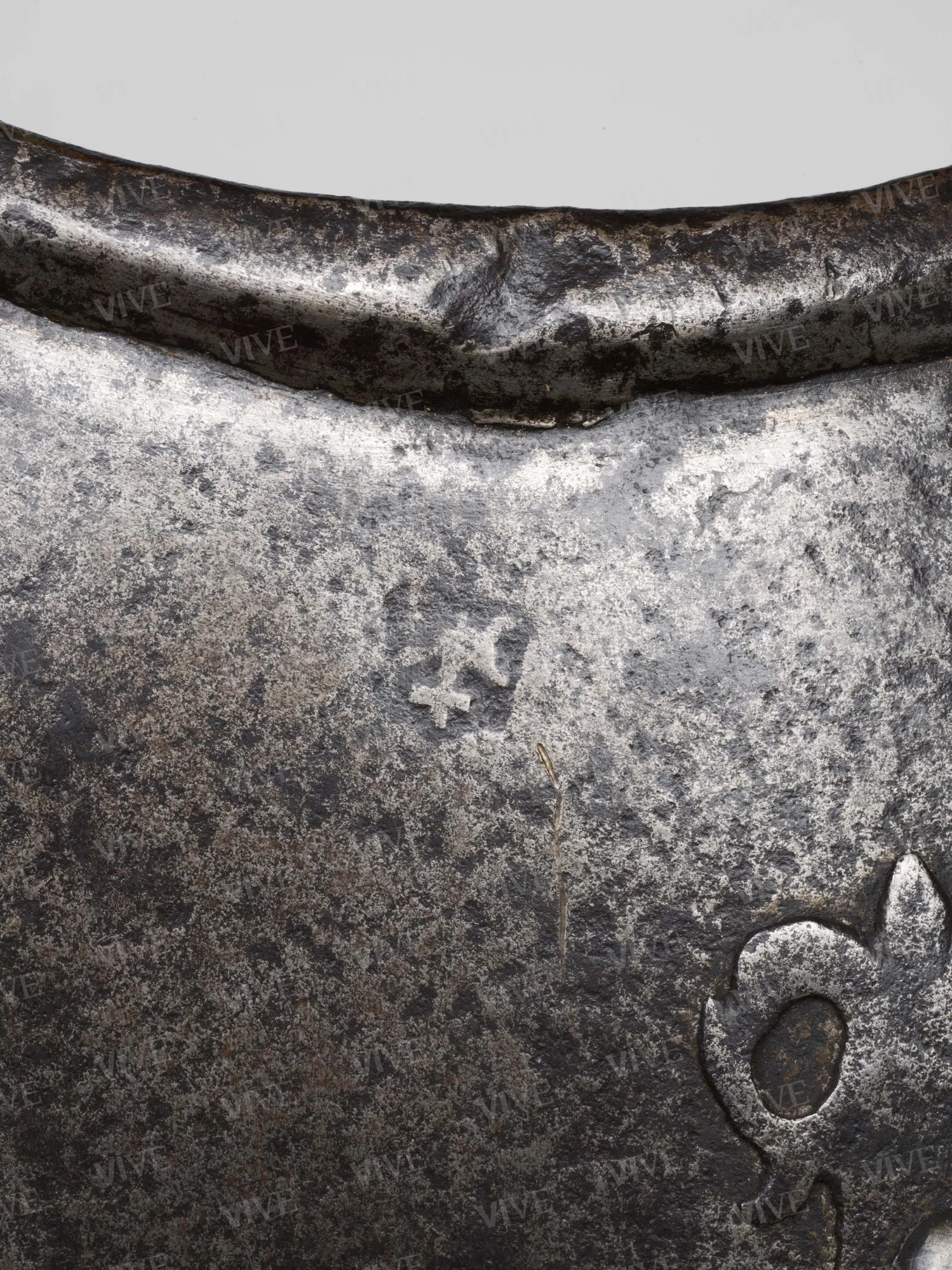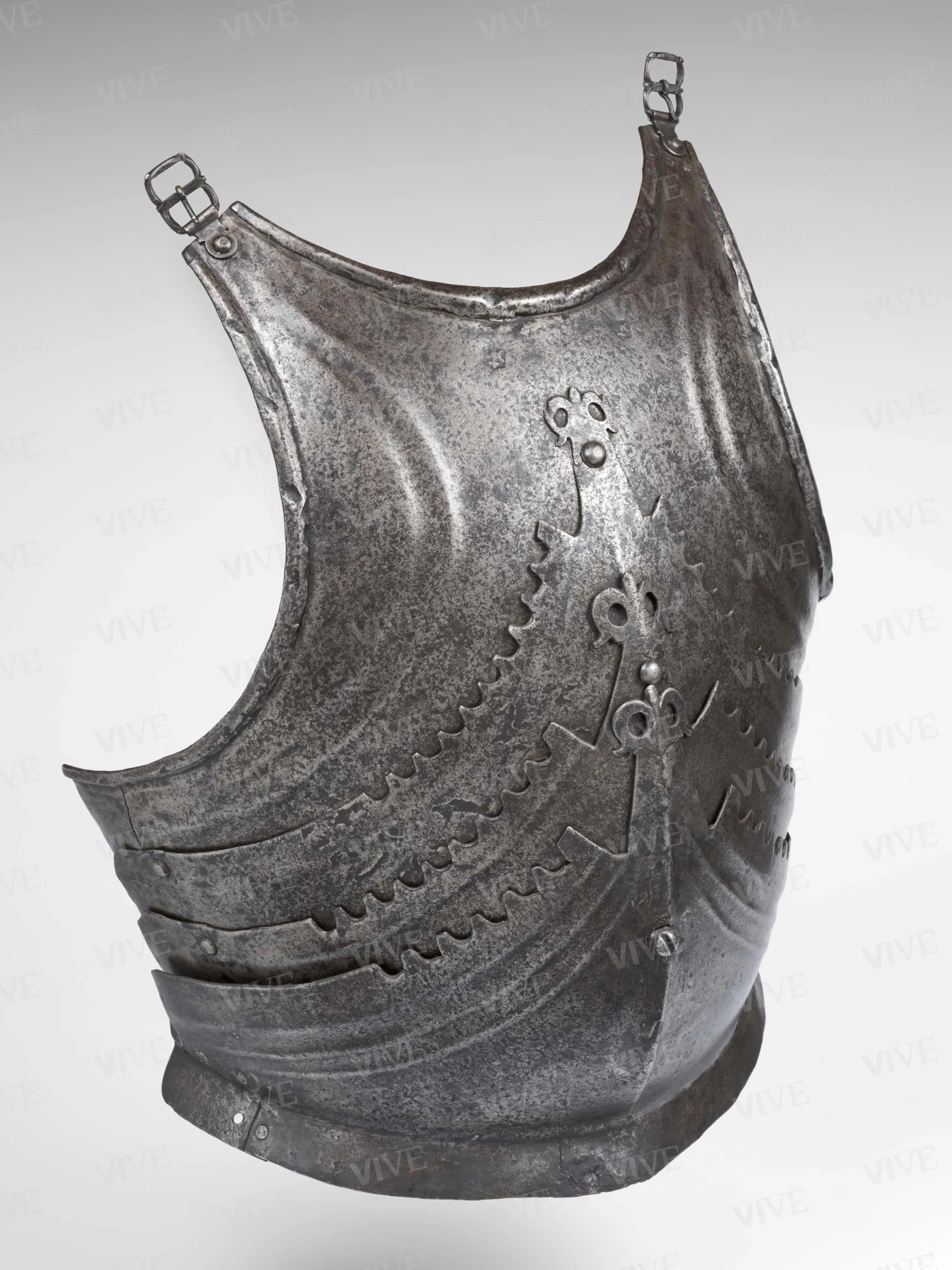Chest armor
German production C. 1490
The chest armor includes both a breastplate and shaped paunch. By the end of the fourteenth century, metal breastplates were widely used due to their resistance to weapon blows in battle. There are examples of both simple, smooth designs and richly decorated ones. German and northern Italian workshops produced breastplates of this type.
The chest armor includes both a breastplate and shaped paunch. By the end of the fourteenth century, metal breastplates were widely used due to their resistance to weapon blows in battle. There are examples of both simple, smooth designs and richly decorated ones. German and northern Italian workshops produced breastplates of this type.
Details of work
Catalog entry
The breastplate consists of four components: the smooth breastplate, marked by two grooves around the axillary area, to which three blades of the paunch plate are attached. Each blade features lateral edges with two deep shells and a shaped profile with large indentations. The central cusp of each blade is designed in the shape of a stylized eagle, although some descriptions refer to them as lilies (di Carpegna 1969, p. 21, n. 104). The piece remains intact, showing signs of impacts.
By the end of the fourteenth century, metal breastplates of this sort became prevalent throughout Europe, offering superior protection compared to the previously used chainmail (known as “usbergo”), which was often reinforced with hardened leather or small metal plates.
These new armors were more resistant to blows from bladed weapons, although they were heavier and more rigid. They could be either smooth or covered with dense decorations engraved on the metal, or embossed to create reliefs on the surface depicting both sacred and profane images. A lining was also attached under the chest with rivets to improve the fit (Gelli 1900, pp. 242 and 248; Oakeshott 2012, pp. 75–95; La Rocca 2017, pp. 51–55).
The breastplate bears a maker’s mark, consisting of a cross topped by a helmet, which has not yet been attributed to a specific workshop. The production of similar breastplates has been identified in the Italian context, influenced by German styles (di Carpegna 1969, p. 22, n. 107), as well as within German manufacturers (Scalini 2018, p. 200, n. VII.2), suggesting that the piece may have been altered.
Similar breastplates, featuring a blade-shaped flap, are preserved at the Metropolitan Museum in New York (inv. 29.150.77; Grancsay, Kienbusch 1933, p. 140, n. 57 or La Rocca 2017, p. 55, fig. 63) and at the Philadelphia Museum of Art (inv. 1977–167–134; Breiding 2020, pp. 56–59, n. 11). The latter piece was part of Carl Otto Kretzschmar von Kienbusch's collection, who was a friend and competitor of Prince Ladislao Odescalchi (1846–1922). The chest in question belonged to Odescalchi's collection, which was acquired by the Italian State in 1959 and housed in Palazzo Venezia in 1969. This collection was not a family armory but resulted from targeted acquisitions in national markets (Florence, Rome) and international markets (Paris, London) starting from the late nineteenth century, guided by Odescalchi’s personal taste (Barberini 2007).
Giulia Zaccariotto
State of conservation
Good.
Coats of arms, emblems, and marks
Beneath the collar, there is a repeated mark featuring a helmet with a cross base.
Provenance
Collezione Ladislao Odescalchi (Odescalchi, no. 745);
acquired by the Italian State, 1959
Rome, Museo Nazionale di Palazzo Venezia, 1969.
Exhibition history
Rome, Museo Nazionale di Palazzo Venezia, Antiche armi dal sec. IX al XVIII. Già Collezione Odescalchi, May–July 1969;
Rome, Castel Sant’Angelo; Rome, Rome, Museo Nazionale di Palazzo Venezia, Armi e potere nell’Europa del Rinascimento, July 26–November 11, 2018.
References
Gelli Jacopo, Guida del raccoglitore e dell’amatore di armi antiche, Milano 1900;
Grancsay Stephen V., von Kienbusch Carl Otto, The Bashford Dean Collection of Arms and Armor in the Metropolitan Museum of Art, Portland 1933;
di Carpegna Nolfo (a cura di), Antiche armi dal sec. IX al XVIII. Già Collezione Odescalchi, catalogo della mostra (Roma, Museo Nazionale di Palazzo Venezia, maggio-luglio 1969), con schede a firma del curatore, Roma 1969, p. 22, n. 107;
di Carpegna Nolfo, Le armi Odescalchi, Roma 1976;
Pyhrr Stuart W., S.J. Whawell and the Art Market, in The Eleventh Park Lane Arms Fair, London 1994, pp. 14-23;
Barberini Maria Giulia, La collezione Odescalchi di armi antiche: storia della raccolta del principe Ladislao, in «Bollettino d’arte», s. VI, XCI, 2006 (2007), 137/138, pp. 101-114;
Fossà Bianca, Studio conservativo delle armi e armature Odescalchi. Nuove metodologie per la schedatura di una collezione, in «Bollettino d’arte», s. VI, XCI, 2006 (2007), 137/138, pp. 115-142;
Oakeshott Ewart, European Weapons and Armour. From the Renaissance to the Industrial Revolution, Woodbridge 2012 (I ed. 1980);
La Rocca Donald J., How to Read European Armor, New York 2017;
Scalini Mario (a cura di), Armi e potere nell’Europa del Rinascimento, catalogo della mostra (Roma, Museo Nazionale di Castel Sant’Angelo; Roma, Museo Nazionale del Palazzo di Venezia, 26 luglio-11 novembre 2018), con schede a firma del curatore, Cinisello Balsamo 2018, p. 200, n. VII.2;
Breiding Dirk H., Arm and Armor. Highlights from the Philadelphia Museum of Art, Philadelphia 2020.

